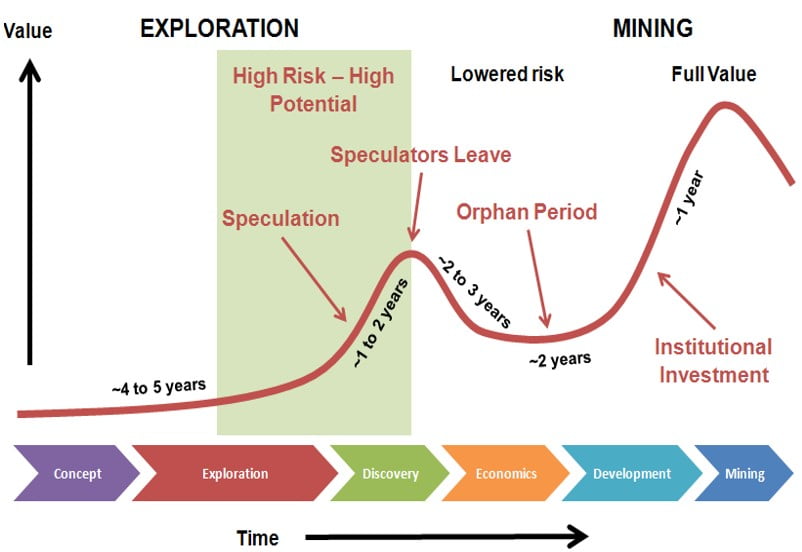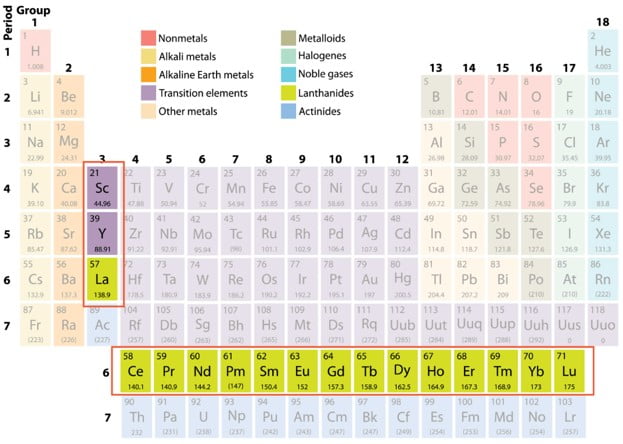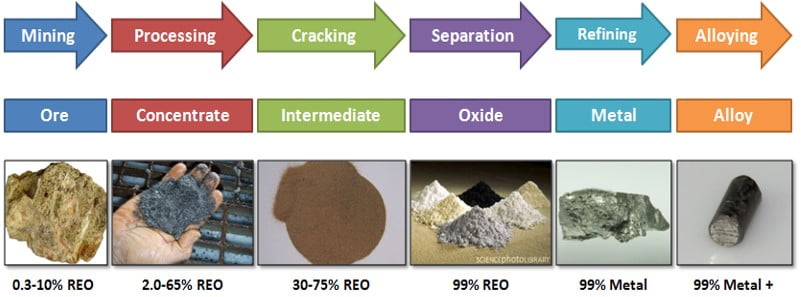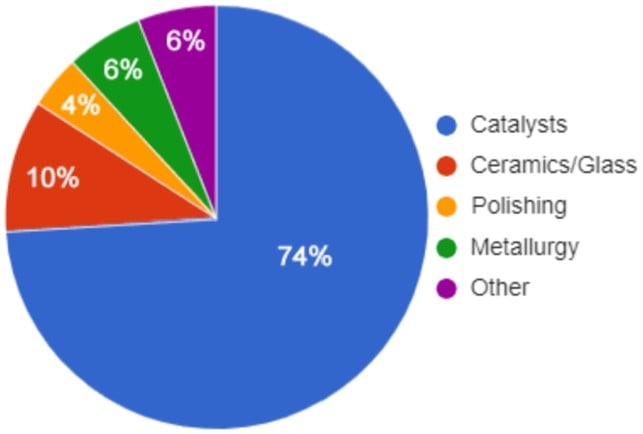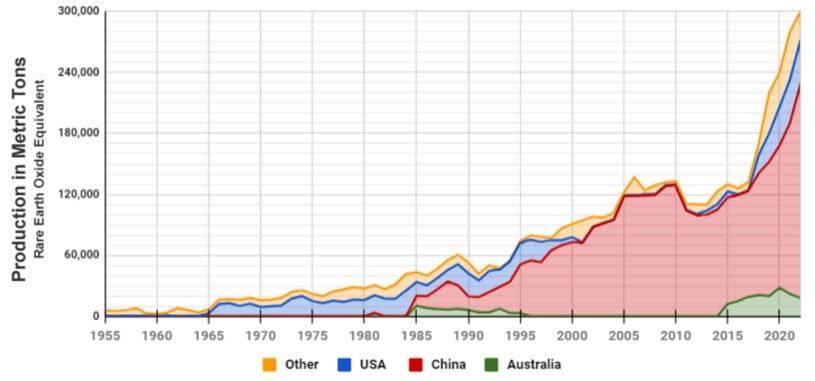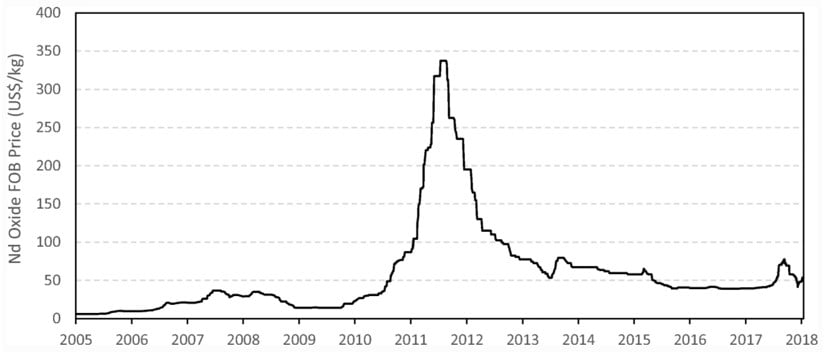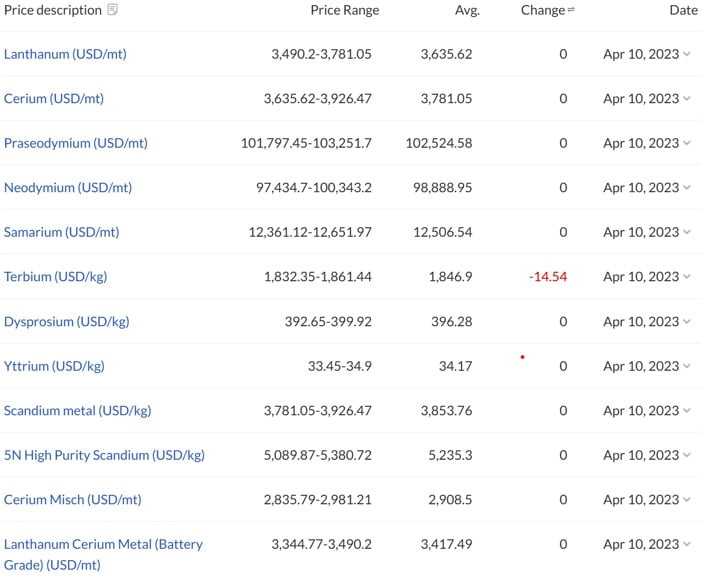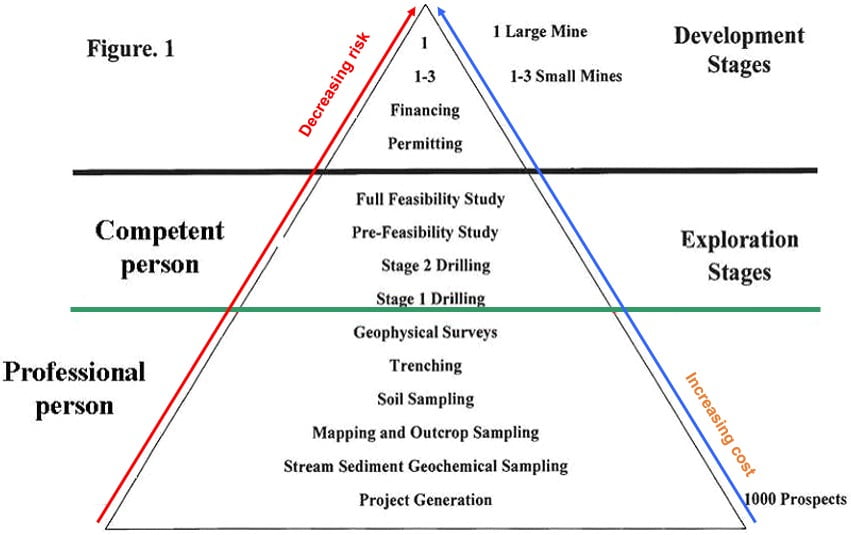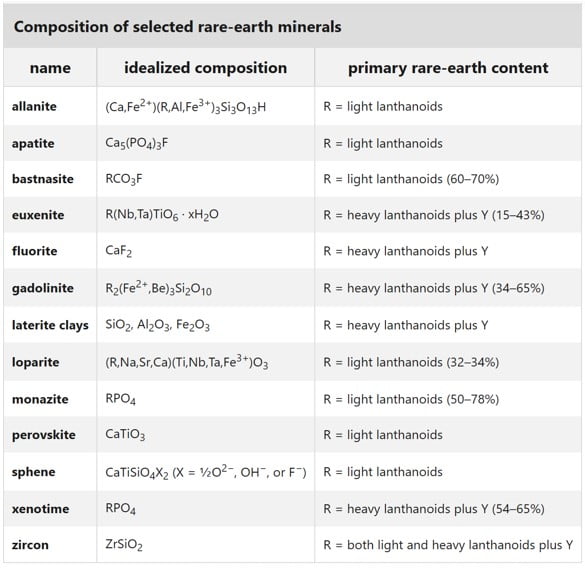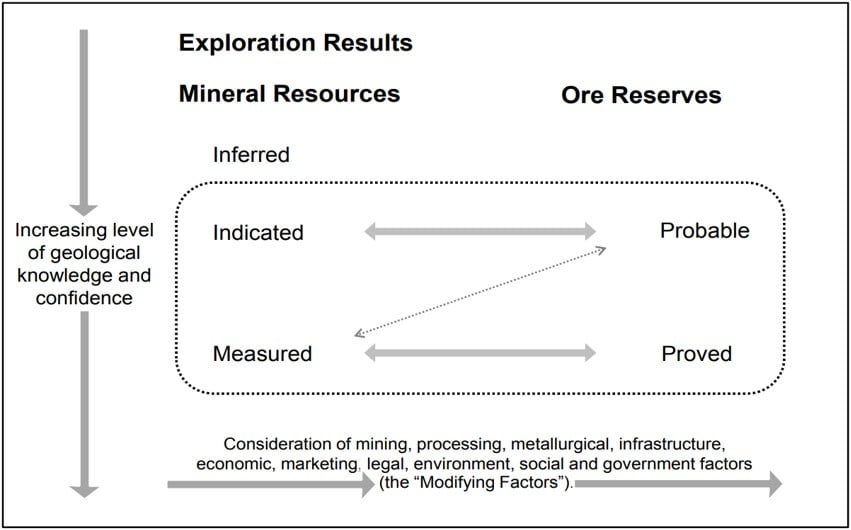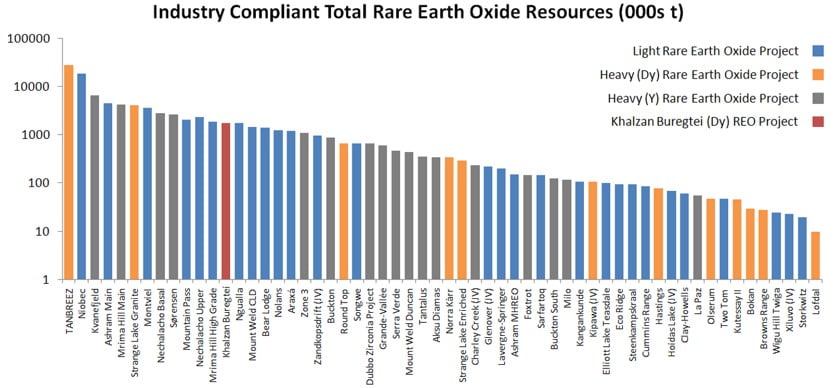Table of Contents
- Introduction
- Product Development Pathway
- Rare Earth Elements
- REE Phases of Development
- Most Economic REE
- REE Market: Supply and Demand
- REE Pricing
- REE Pricing April 2023
- Source of REE
- Project Exploration
- Project Development
- Naturally occurring radioactive materials
- REE Deposit Types
- Project Deposit
- REE Mineralisation
- Key Ore Minerals
- JORC 2012 Standards Compliance
- JORC 2012 MRE
- Conversion Factors
- Critical REE
- Characterising the Mineral Resource
- Metallurgical Testwork
- Process Extraction
- Comparable Projects
- Download
MEC Mining (MEC) provides services to advance Rare Earth Element (REE) projects from exploration through to production. MEC can ensure all work will comply with International standards, such as JORC. This includes advancing projects through exploration, scoping study, prefeasibility study, and feasibility study.
JORC compliance ensures that the project will be viewed with greater confidence by investors, funders, potential JV partners, and project/product buyers.
MEC can provide project guidance and if required project management for exploration, including provision of QAQC & NORM protocols for early-stage exploration through to drilling.
MEC has a large staff of Geologists and Mining Engineers and can progress the REE projects from greenfields exploration, to target identification, drill design, Mineral Resource estimation, and Ore Reserve estimation.
The REE project development pathway progresses from concept then exploration, discovery, economic assessment, development, and then finally production.
The most economic REEs and their uses are:
Scandium: Used as an alloy with aluminium for aerospace components, bicycles, and many other products that need a light and very strong alloy. Also used in light bulbs.
Lanthanum: A hybrid car’s nickel-metal hydride batteries contain 9kg (20lbs) of lanthanum. Other uses include vacuum tubes and lenses.
Europium: The most reactive REE is highly sought after because of its use in LED screens. Other uses include florescent lamps and genetic disease screening
Other rare earth elements have applications in nuclear reactors (promethium, samarium, gadolinium, dysprosium) magnets (samarium, holmium) and alloys (praseodymium).
Dysprosium: Used in permanent magnets for motors, electric vehicles, generators, and wind turbines. Permanent magnets used in electric cars are a primary use of dysprosium alloys. Currently, the creation of permanent magnets is the main use of dysprosium and is causing the demand for this element to grow rapidly.
Prices of REE products increased dramatically after the Chinese export restrictions.
In 2010, China cut its production quota for REE concentrates by 25% and its export quotas for various REE products by 37%. As China was producing most of the REE minerals in the world, these actions caused a sharp increase in the REE prices. For example, the Chinese-export price of neodymium oxide increased from approximately $25/kg in early 2010 to a peak value of $340/kg in July 2011.
Market applications of REE are shown in the pie chart.
Production from other sources has increased in an effort to secure domestic supply. The graph of International REE production is shown below.
Chinese Neodymium oxide export price
Source: Argus Media 2018
Pricing 2023
Critical REEs that each have individual markets include neodymium, because it’s the most important REE used in permanent magnets. The others are heavy rare earth elements (HREEs), including europium, terbium, dysprosium and yttrium. REE pricing April 2023 is shown below (Source: https://www.metal.com/Rare-Earth-Metals)
Resources are primarily derived from four geologic environments: carbonatites, alkaline igneous systems, ion-adsorption clay deposits, and monazite-xenotime-bearing placer deposits.
China with one-third of world’s REE reserves, is still the world leader in REE exploration and production.
Before the REE mining boom in China, the USA dominated the global market. Mountain Pass initiated operations in 1965 and was the leading producer worldwide for decades. However, mining activities stopped in 1998, mainly due to the competition from China as well as in response to environmental issues.
Project Exploration typically progresses through several stages –
- Greenfields exploration, involving mapping, geophysics, grab sampling, soil sampling, trenching, and pit sampling.
- Target identification and testing of anomalous areas.
- Initial scout drilling.
- Follow-up drilling and Exploration Target quantification.
- Deposit drilling.
- Mineral Resource estimation.
Following Mineral Resource estimation the exploration work would progress to development stages –
- Metallurgical test work, modifying factor studies.
- Completion of scoping, prefeasibility, and feasibility studies.
- Ore Reserve estimation.
MEC can design the drill program based upon surface mapping, geochemical sampling, and geophysics.
Where there is an occurrence of Naturally Occurring Radioactive Materials (NORM), MEC can implement monitoring procedures.
The site management has an obligation to develop and implement a safety and health management system, ensuring that the site controls the risk to an acceptable level. This system must address the scenario of a person in a project’s workings or local environment being exposed to radiation, at above dose limits, from a naturally occurring radioactive mineral at the exploration site. The site executive must ensure a system to provide for the safe management of the radiation; and ensure the system is complied with. PPE, dose meters, and tag readers should be utilised where NORM is an issue.
The radiation dose limit for a member of the general public is 1mSv per year above background.
The main REE deposit types are –
- Alkaline igneous rocks: pegmatites and carbonatites
- Residual deposits
- Placer deposits
- Undersea deposits
Alkaline igneous rocks: pegmatites and carbonatites
Alkaline igneous rocks are formed by the partial melting of deep mantle rocks, which subsequently rise and cool within the earth’s crust. Typically an alkaline magma is enriched in not just rare earth elements but also zirconium, niobium, strontium, barium, and lithium. As the magma ascends it changes chemically in response to a complex interaction of factors including temperature, pressure, and the chemistry of the surrounding rocks. This complex interaction results in the great variety of rare earth deposits observed. These are often very old rocks and are typically associated with stable continental shield areas. Later metamorphism can also occur, and greenschist-facies metamorphic belts have also been considered as exploration targets for rare earths.
Residual deposit type:
Deep weathering associated with tropical climates form soil called laterite which is not just iron and aluminium rich, but can also be enriched in rare earths. A layer rich in minerals forms at the base of the weathered laterite layer, above the unweathered rocks.
Placer deposit type:
Like gold, rare earths are relatively heavy and can be concentrated in gravels by the action of water in streams and beaches. Placer deposits can either develop as a result of in-situ weathering, or be a result of weathering combined with water action to create alluvial deposits. Monazite and xenotime are the two minerals most commonly concentrated. Palaeoplacers are simply ancient placer sands which have been buried by subsequent deposits.
Undersea deposit type:
As most of the earth is covered with water, it stands to reason that there are significant ore reserves under it. The difficulties of both jurisdiction and the technology required has seen the mining industry be a late starter to the undersea minerals boom.
Of the approximately 160 minerals that are known to contain rare earths, four are currently mined for their rare earths: bastnaesite, laterite clays, monazite, and loparite. With the exception of laterite clays, these minerals are good sources of light lanthanides and lanthanum and account for about 95 percent of the rare earths in use. Laterite clays are a commercial source of the heavy lanthanides and yttrium.
Bastnaesite extraction involves complex multi-stage processing including multiple acid washes to concentrate out the various REE present. Processing of radioactive monazite is toxic.
The JORC code sets the standards for the completion of work and follows the concepts of transparency, materiality and competency, to ensure the veracity of the work result. With an increased level of confidence, the Mineral Resource classification may progress from Inferred to Indicated and Measured. Indicated and Measured Mineral Resources may then be eligible for conversion to Ore Reserves.
Source: Australasian Code for Reporting of Exploration Results, Mineral Resources and Ore Reserves, JORC 2012 edition
- Mineral Resource estimation may be conducted within defined domains based on geology and grade. The dominant REE in terms of project value may be used to determine the domains.
- If for example dysprosium is the dominant REE in terms of project value, followed by another REE such as Neodymium, then the remaining REE may be grouped under these elements and the same variograms used for each group to interpolate the REE variables.
- The REE oxide values may be estimated using a method such as Ordinary kriging, applying the grouped elements to the variograms.
- An economic cut-off grade should be applied to the TREO to report the MRE. The cut-off grade may be comparable to other similar deposits if there is insufficient economic analysis to determine the economic cut-off grade for reporting.
- For the Mineral Resource estimate each individual element grade may then be stated for the domains at the economic cut-off grade, along with the CREO%, and TREO%.
Rare earth projects are generally divided between light and heavy rare earth projects. In turn, heavy rare earth projects can be divided between those that have a high content of yttrium (“yttric”), and those that do not.
The remaining projects, not classified as “light” or “yttric” would have economics dominated by the valuable rare earth dysprosium, thus these are termed “dysprosic”.
Metallurgical testwork and mineralogy studies are required to determine the dominant minerals, and what elements may be leached.
A composite of the major ore types should be subject to scoping mineral beneficiation to produce a mineral concentrate and the mineral concentrate then subjected to bake leach extraction tests.
The extraction of REE usually involves the dissolution of the ore using acidic or alkaline solutions depending on the mineralogy of the REE-containing phases and reactivity of gangue phases, typically, the use of acidic solutions is more common.
Depending on mineralogy, the extraction step often involves roasting of the REE ore at 400–500 °C in concentrated sulphuric acid to remove fluoride and CO2, and to change the mineral phase to make it more water-soluble. Generally, separation techniques such as solvent extraction, ion exchange, and precipitation are often used for the recovery of REE from pregnant leach solutions (PLS) obtained from acid or alkali leaching.
Solvent extraction is generally accepted as the most appropriate commercial technology for separating REE due to the need to be able to handle larger volumes.
Source: Science Direct, Geoscience frontiers, Vol 10, Issue 4


